Stuart Forster outlines what to expect when visiting Lumiere Durham, the United Kingdom’s biggest festival of lights, in Durham City, England.
Lumiere Durham takes place every two years. The biennial festival of light draws thousands of visitors into Durham’s city centre over four evenings in November.
Consisting of 37 installations, the 2021 Lumiere Durham will be held from 18 to 21 November.
In addition to installations in Durham City, the 2021 Lumiere features a county-wide programme, Marks in the Landscape features installations at the Apollo Pavilion in Peterlee, Penshaw Monument and Seaham Marina. Finchale Abbey, Raby Castle and Ushaw Historic House will also host artworks.
Installations designed by local and international light artists are displayed. They are illuminated from 4.30 pm to 11.00 pm.
Disclosure: Some of the links below and banners are affiliate links, meaning, at no additional cost to you, I will earn a commission if you click through and make a purchase.
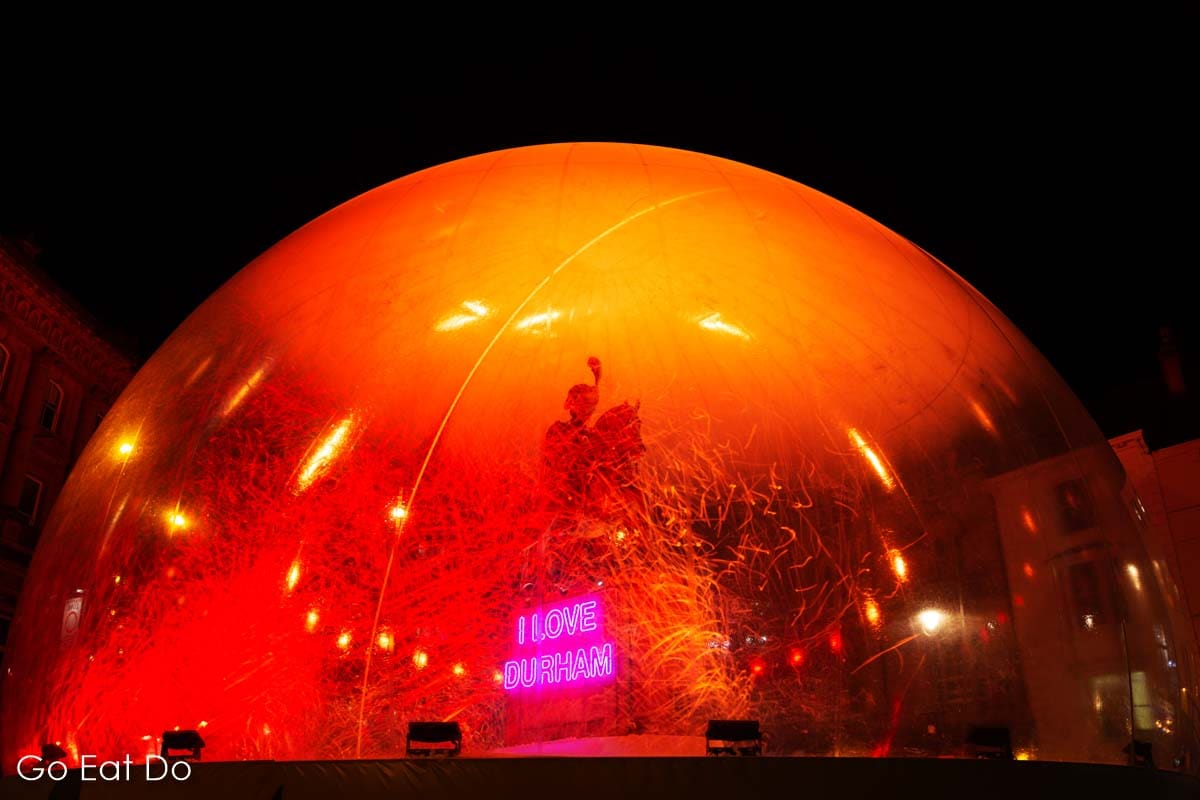
Durham’s festival of lights
The first Lumiere Durham was held back in 2009, featuring 22 light installations. Organisers expected 40,000 visitors to the four-day event but 75,000 turned up.
More than a million people have attended the first six editions. The tenth anniversary edition, in 2019, was the biggest so far, featuring 37 installations. In it, some of the most popular pieces from the first five events returned to the city.
I’ve visited and photographed each edition of the Lumiere Durham. For me, it’s also a reason to meet with friends and enjoy a chat and a couple of drinks after viewing and photographing the installations.
Durham’s lanes bustle with visitors during the festival of lights. The city’s streets are usually fairly quiet on chilly November evenings, save for a few students strolling between activities and their residences or pub goers walking between watering holes.
The event showcases artworks by internationally renowned light artists such as Jacques Rival. Rival’s I Love Durham, resembling a giant snow globe encasing the equine statue of the Marquess of Londonderry on the marketplace, has been displayed at two editions of Lumiere Durham.
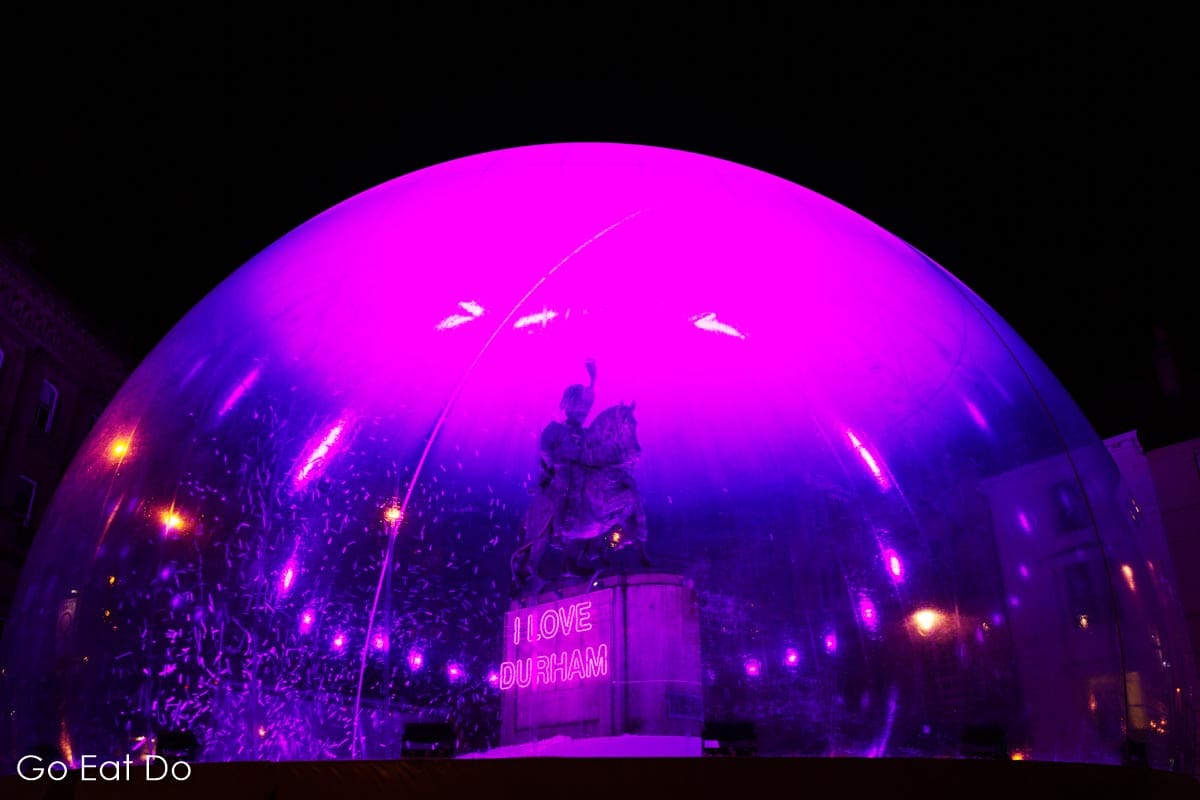
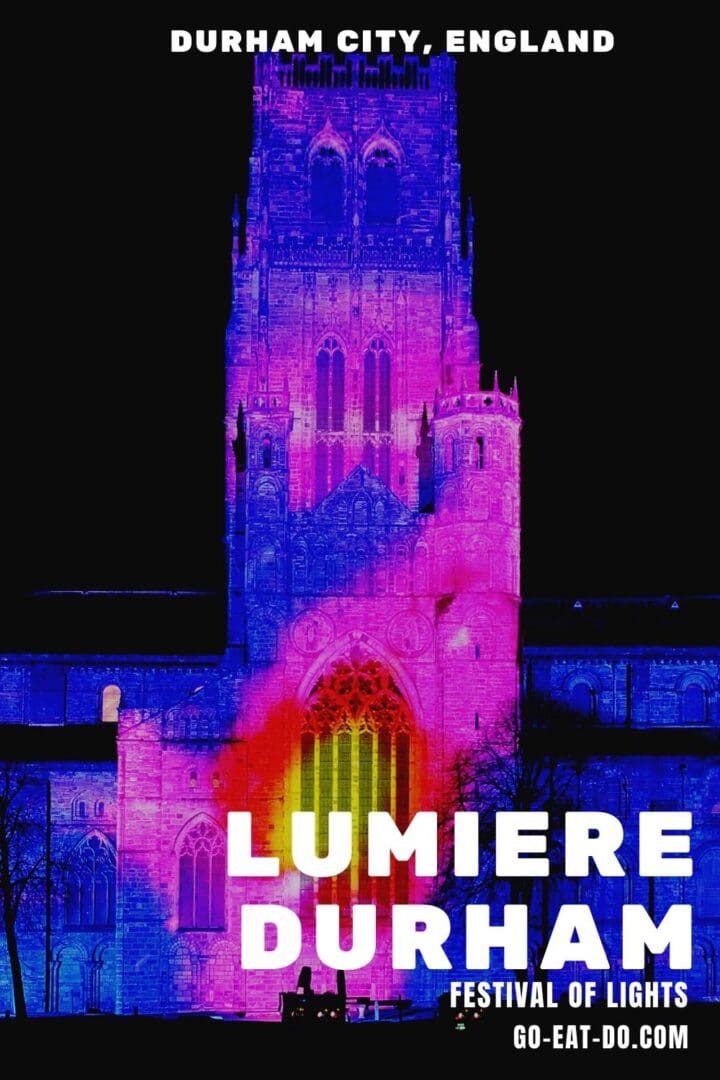
Highlights of Lumiere Durham
The sound and light shows, known as son et lumiere, projected onto the exterior of Durham Cathedral count among the most popular installations at Lumiere Durham.
Hundreds of onlookers gather on Palace Green to view the spectacle on the cathedral’s Romanesque façade. I find the works an interesting challenge to photograph, due to their scale and changing light levels.
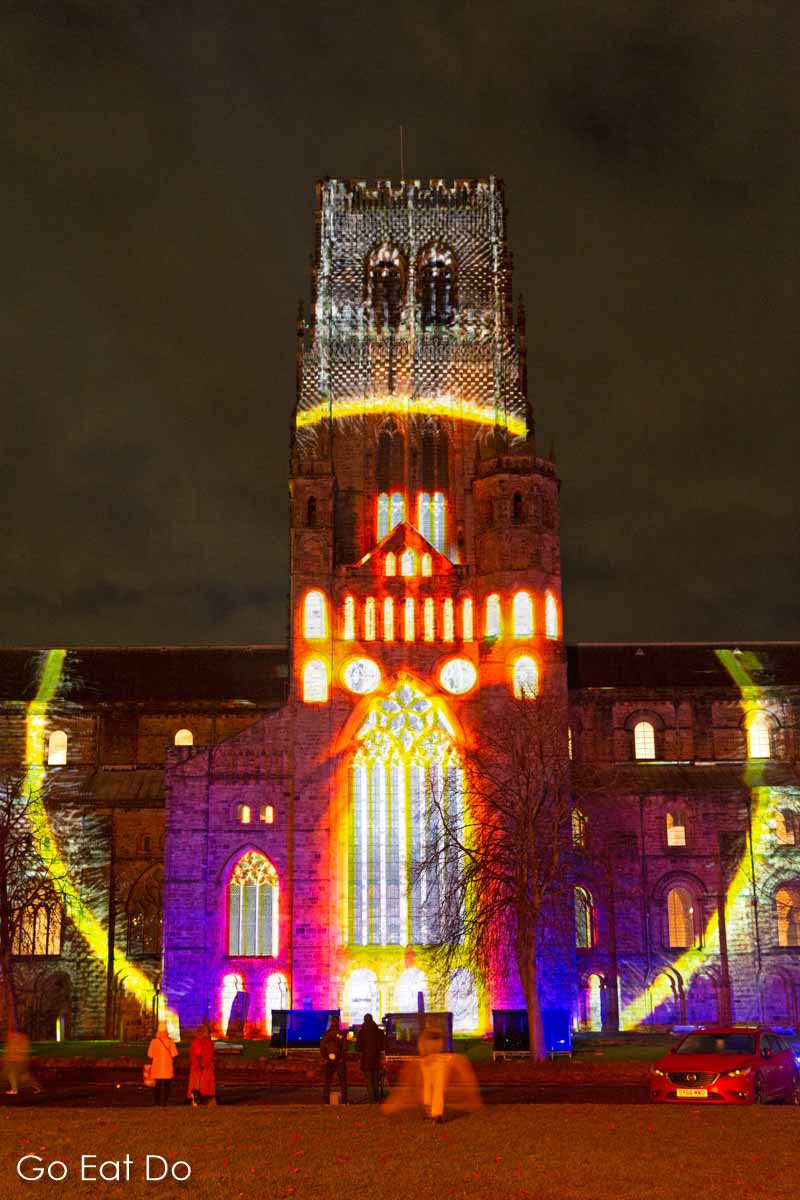
The works that have been projected onto Durham Cathedral include World Machine, a collaboration between Ross Ashton, sound designer John Del’Nero and composer Isobel Waller-Bridge. It featured images conveying moments in Durham’s history.
Stones by Tigrelab Art is another of the works that could be appreciated at Palace Green.
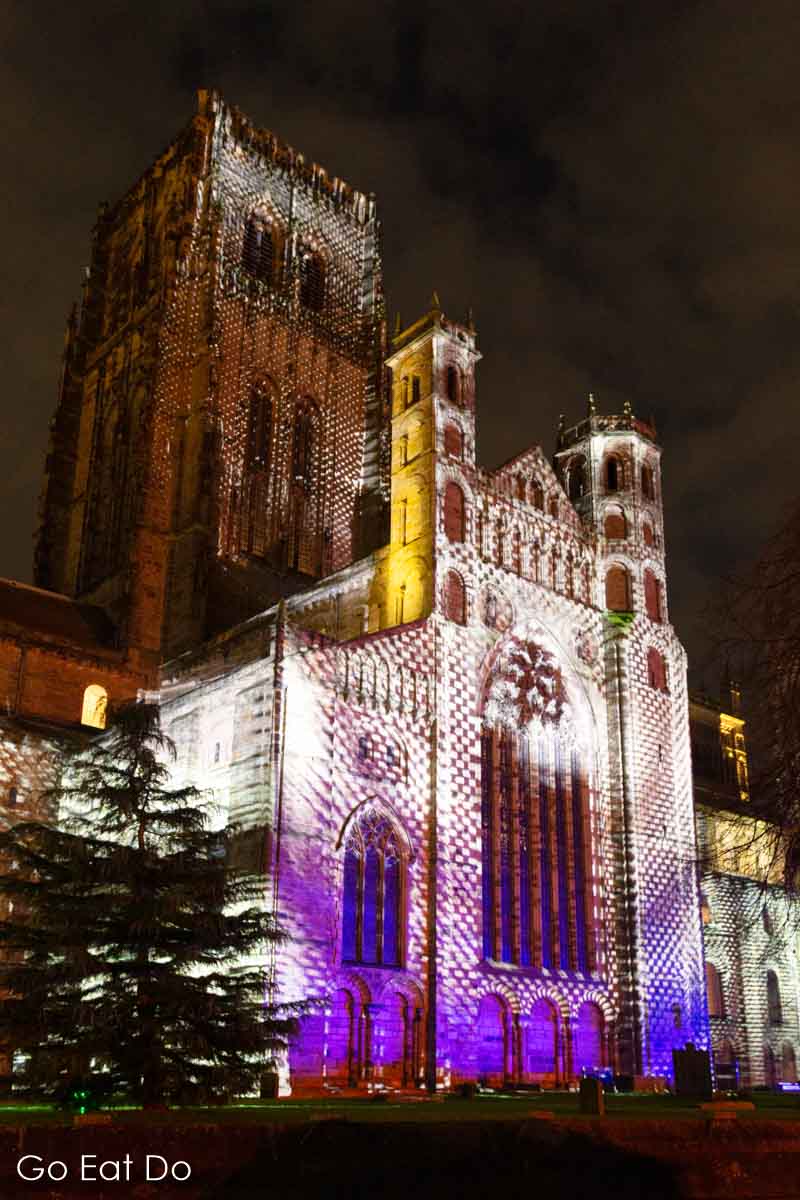
Durham Miners’ Hall
Redhills, Durham Miners’ Hall, counts among the buildings utilised as a venue for installations during Lumiere festivals. A 3-D video projection, The Common Good by Shared Space and Light, featuring images of public workers was projected in 2017.
Cosmic Architecture, by Nina Dunn and John del’ Nero, was at the Ogden Centre for Fundamental Physics, a building designed by the architect Daniel Libeskind.
Several interactive installations have appeared. They include Colour by Light by Stockholm-based Floating Pictures, which allowed visitors to Lumiere Durham to create light graffiti using torches or smartphones.
Additionally, you may see a flash mob in action. Cirque Bijou choreographed Umbrella Project
No worries if you visit Durham between the festivals. You can get a taste of Lumiere Durham by visiting Lightbench, an illuminated bench overlooking the River Wear. It’s a permanent legacy of the 2015 edition.

Following the footpath alongside the River Wear provides opportunities to view installations on the river and projected onto the walls of Durham Castle.
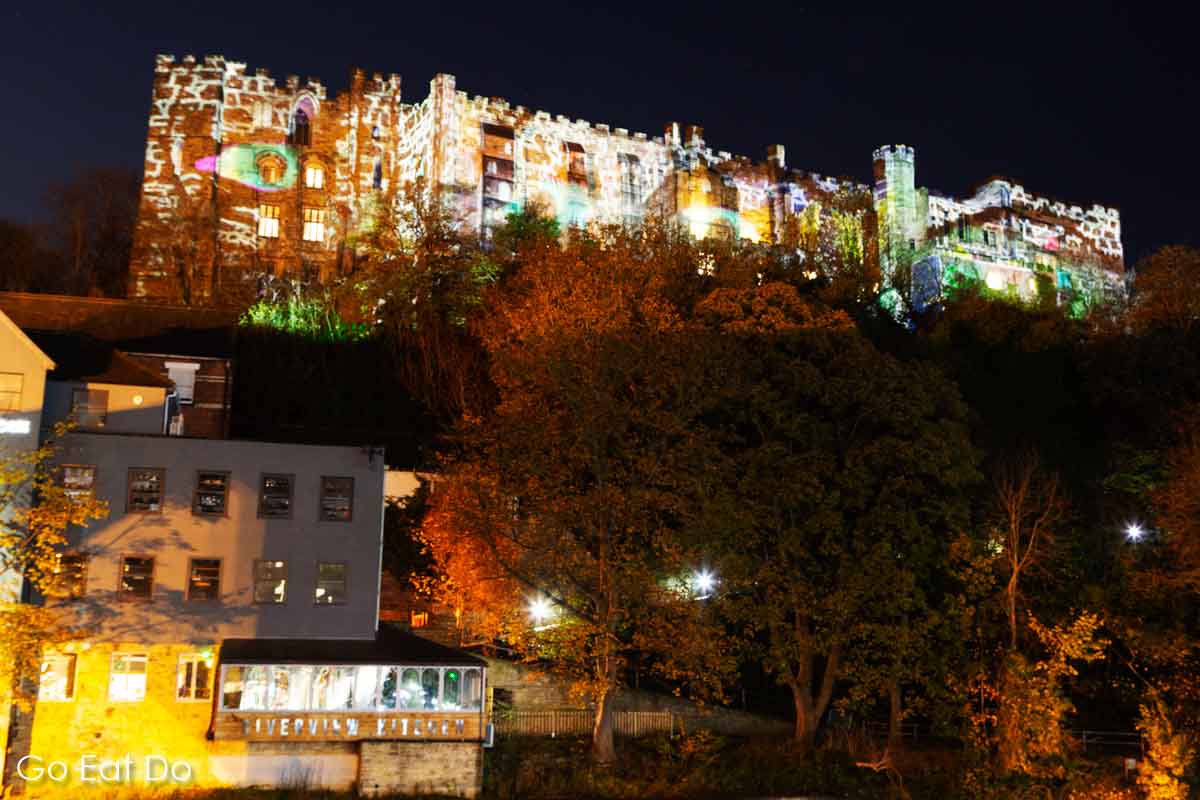
Installations shown more than once
The tenth anniversary Lumiere involved a return for several of the installations previously exhibited around Durham.
Spirit, a flaming work by Compaigne Carabosse, was first shown in 2011. In 2019 it returned to the cloister of Durham Cathedral and College Green.
Echelle, a glowing neon ladder designed by Ron Haselden, was displayed in a yard on Saddler Street a decade on from its initial appearance.
Mysticète by Top’la Design and Catherine Garret was shown in 2015 then again in 2019. It made a big splash with visitors to Lumiere Durham and is one of my all-time favourites from the first six festivals. The work features a projection of a whale appearing to breach the surface of the River Wear, twist around and splash back down into the water.
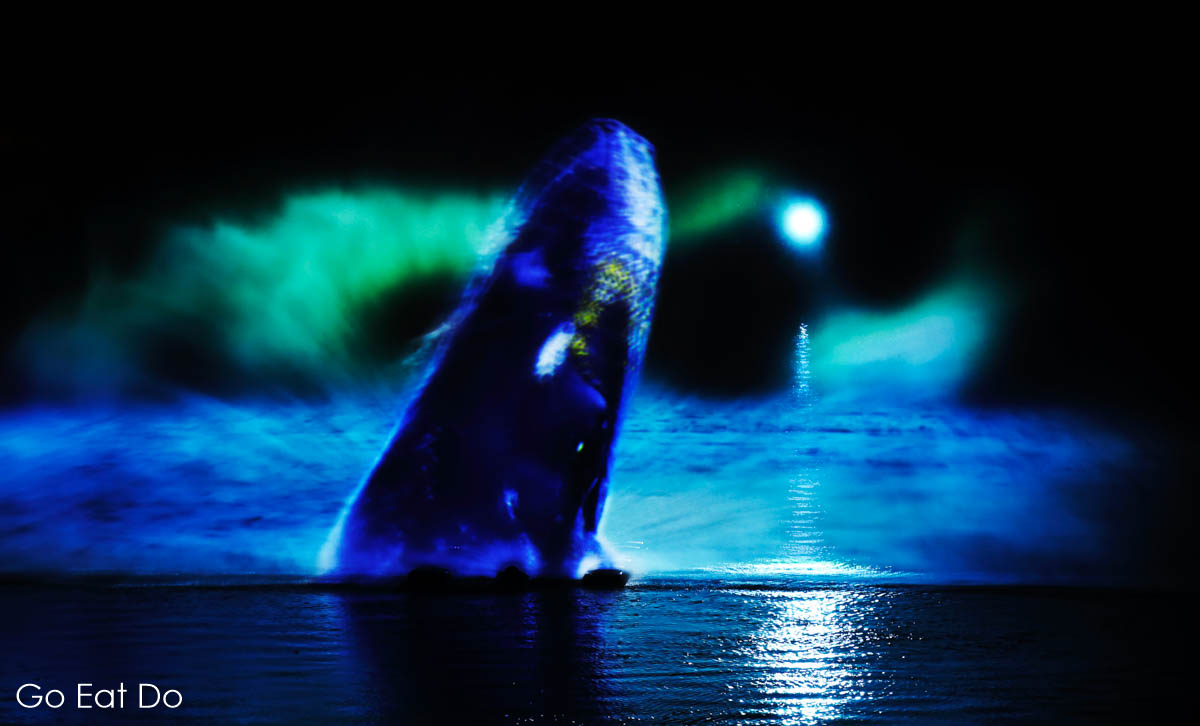
What people say about the festival
“It’s world-class. Durham shines bright on a global scale,” said Simon Henig CBE, the leader of Durham County Council when I interviewed him. The event “illuminates history and heritage in a unique way,” he added at the unveiling of the 29 light installations displayed at the 2017 Lumiere Durham.
“It’s a huge team effort…we love being here,” commented Helen Marriage MBE, the director of Artichoke, the creative agency that initiated Durham Lumiere in 2009, and the Lumiere Artistic Director.
“Lumiere was born in Durham in 2009 and became a blueprint for later festivals elsewhere. Each festival is different as all the installations are site-specific and respond to the cityscape, such as buildings, bridges and rivers. But Durham always feels like home,” she added. The event spawned Lumiere London plus a festival in Northern Ireland’s second city.
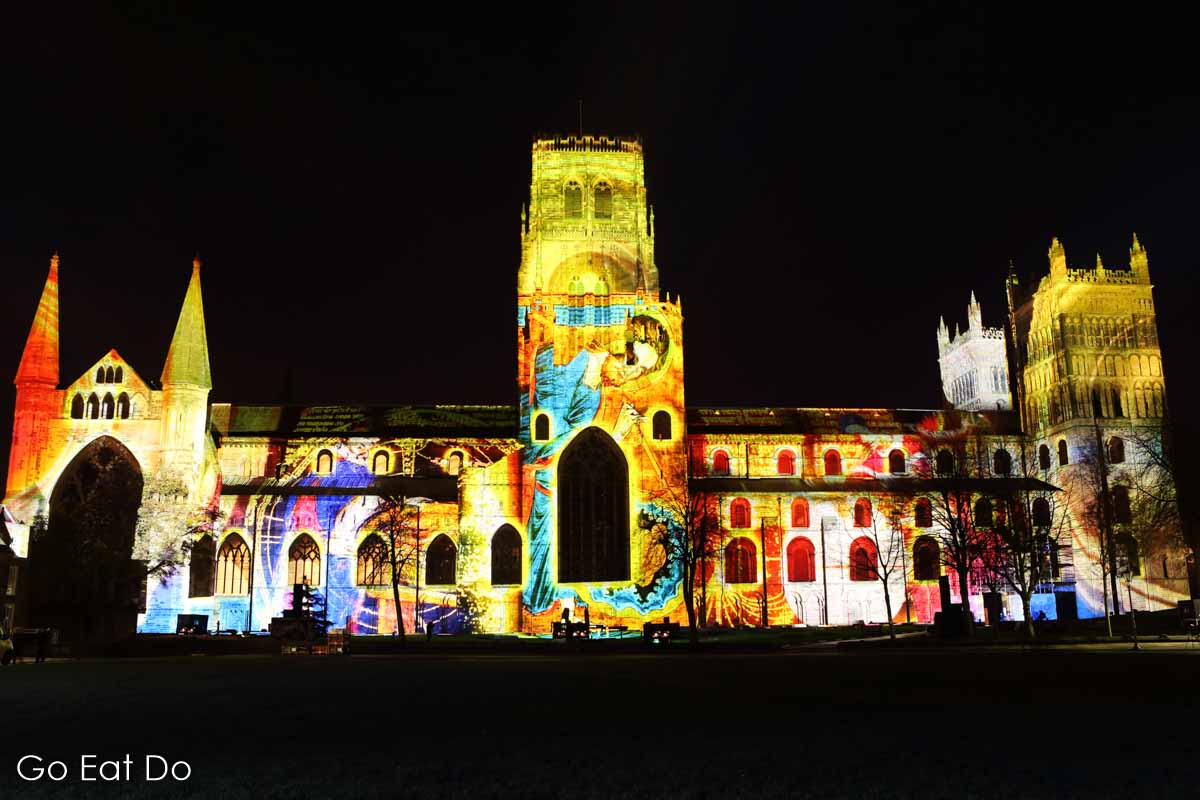
“Durham really is a perfect little city for a light festival,” observed Marriage, echoing the words of Bill Bryson, the travel writer and former Durham University chancellor. “The people of Durham have taken the festival into their hearts and feel a strong sense of ownership now after six editions…it’s become a highly anticipated event on the biennial cultural calendar.”
“We pride ourselves on our extremely high production values. The Lumiere installations should appear as if by magic out of the darkness. The audience experience should be seamless. While the pieces look simple this is technically very challenging to achieve, and some installations are more difficult than others,” explained Marriage.
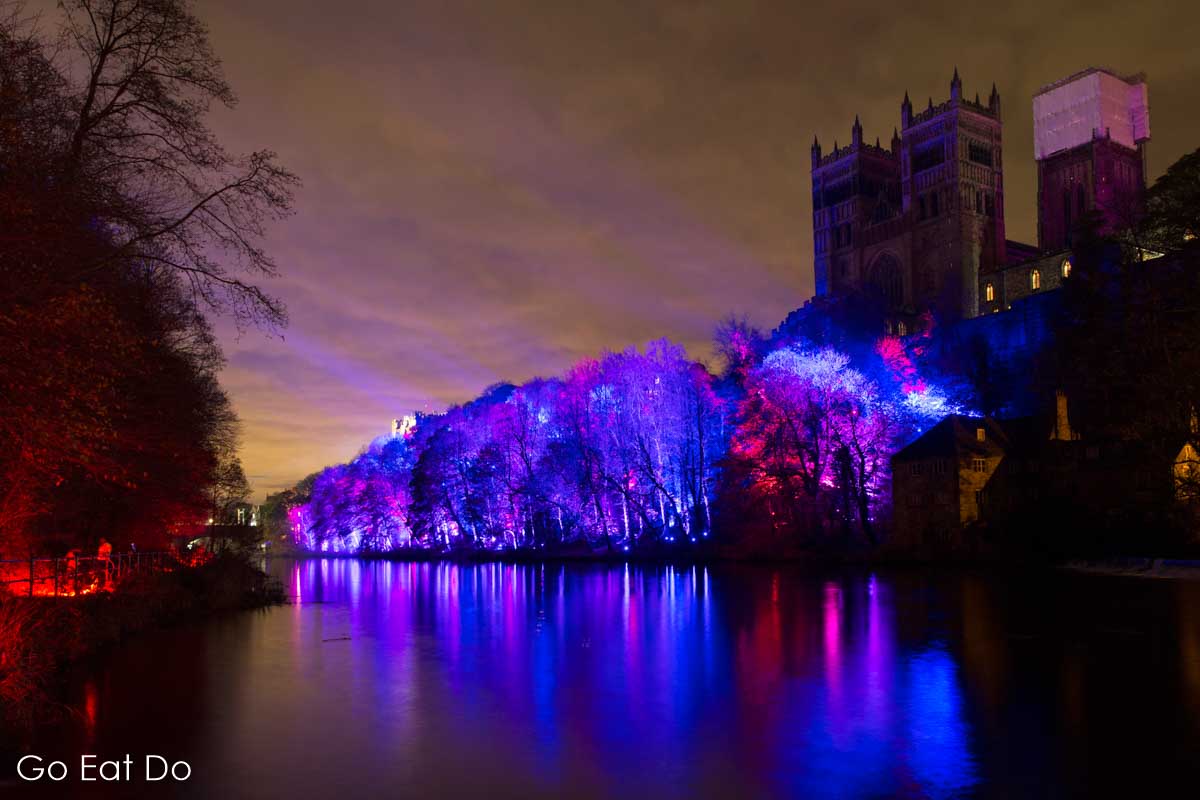
Community participation in Lumiere
The local community plays a significant role in making Lumiere Durham a success. One example of this is the participation of thousands of Durham residents in the outreach programme featuring learning events, activities and workshops.
Since 2011 local artists have been able to pitch ideas for installations via the commissioning scheme, Brilliant. Winners include Big Knitting, Victoria MacLeod’s giant knitting needles in 2015 and Sagacity: Periodic Table of Emotions, Big Knitting, an interactive installation by Aidan Moesby.
Hundreds of pieces of hand-blown glass, created at the National Glass Centre in Sunderland, were arranged in St Oswald’s Church in 2017 to form Schuster and Mosely’s installation What Matters (The Scattering).

Many of Durham University’s students count among the volunteers who help visitors orientate during Lumiere.
“The heart of the city is the World Heritage Site and we share that with the partners from the county and the cathedral. Being part of the Lumiere festival is an obvious thing to do. It engages us with our community and it engages our academic research with that community,” said Dr Keith Barlett, Durham University’s Director of Culture.
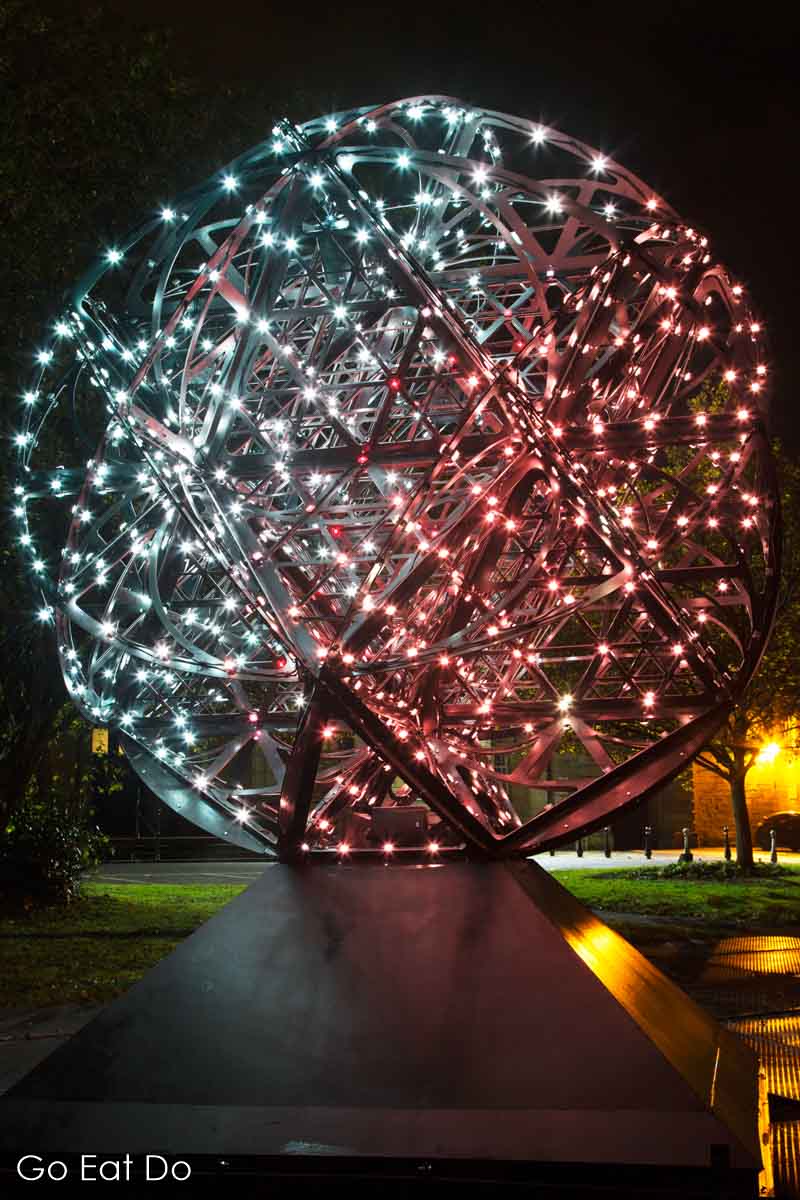
Economic benefits of Lumiere Durham
So, who pays for Lumiere Durham? Local businesses invest £2 million to help make the event happen. That adds to funding received from Durham County Council and the Arts Council England.
The return on investment is significant. The economic impact on Durham and the surrounding region was estimated at £9.6 million following the 2015 edition which attracted 200,000 people into the city over four nights. The 2017 edition benefited the local economy by £7.6 million.

Tickets for Lumiere Durham
For the four evenings of Lumiere Durham, access to the nine installations in the peninsula area (that’s the central area within the loop of the River Wear) of Durham is restricted to ticket holders between 4.30 pm and 11.00 pm. The peninsula area is also known as the pink zone. Two installations are displayed inside of Durham Cathedral and are accessible only during the daytime.
24 of the 37 installations in the 2021 Lumiere Durham are accessible at all times without tickets.
Ticketing limits the number of people in the city centre during the early part of the evening. That helps make Lumiere Durham a family-friendly event.
Interested in knowing how to get tickets for Lumiere Durham?
Tickets for the biennial festival of lights can be ordered online via the Lumiere Festival website. They are free of charge.
Book free tickets to the 2021 edition for up to six people per household via the Lumiere Durham website.
Libraries and leisure centres across County Durham are allocated tickets to distribute. They’re also available from the Gala Theatre and Cinema in Durham City.
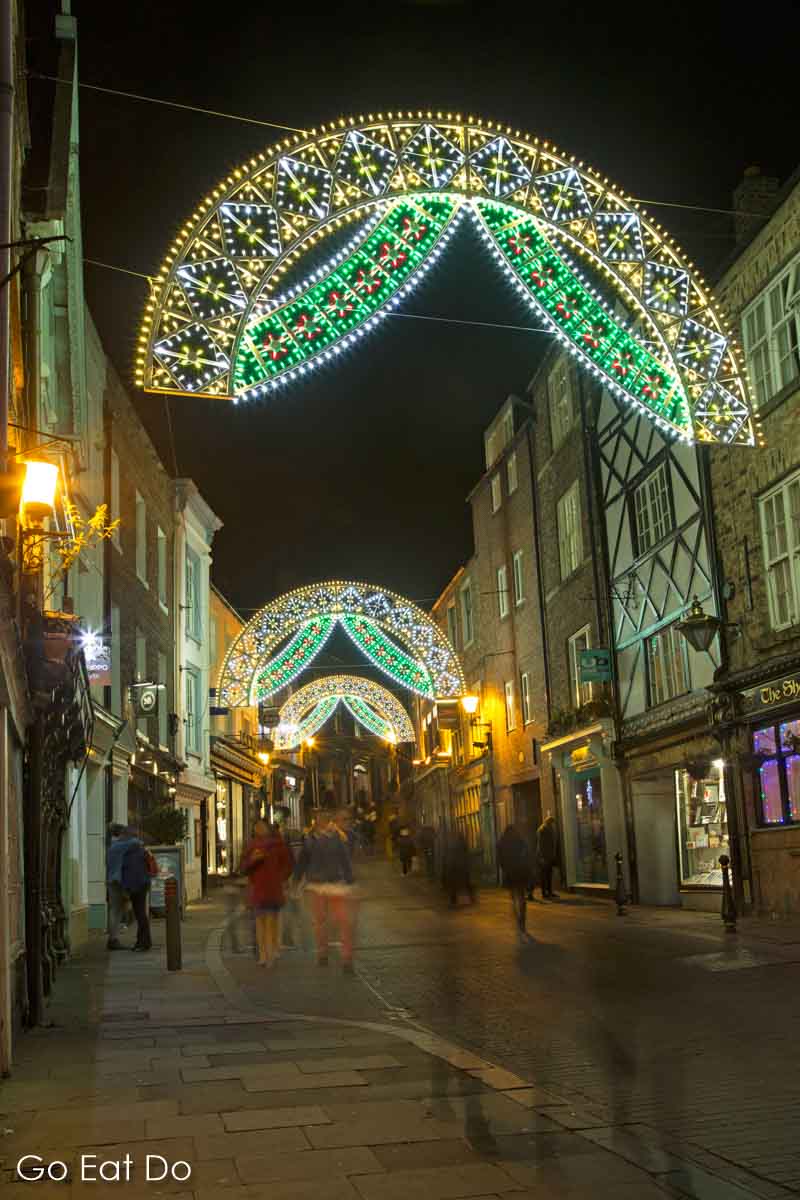
Photography at Lumiere Durham
Serious photographers may be disappointed to learn that using a tripod is not permitted inside of the ticketed area during Lumiere Durham.
If you have a digital SLR, set your ISO relatively high to capture handheld images of installations.
Of course, advancements in technology mean that it’s now possible to capture relatively sharp images in low light using smartphones. You can see photos of previous events by searching images tagged with #LumiereDurham.
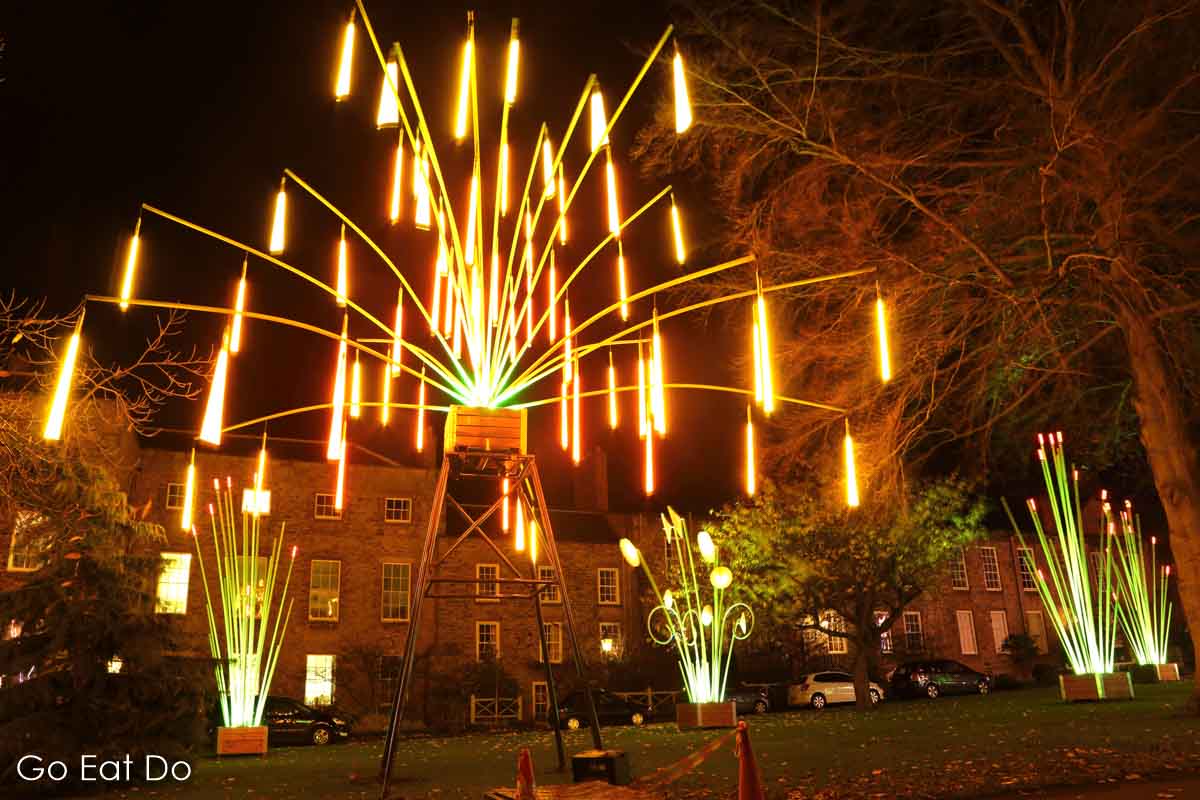
What to wear for Lumiere Durham
Lumiere Durham is held in November when the weather in northeast England tends to be changeable. The average temperature ranges between 4°C and 9°C. Rain is not uncommon at that time of year.
Consequently, it makes sense to dress for the prevailing weather conditions and be prepared for change. I wear a warm, waterproof coat. A scarf, pair of gloves and a woolly hat often come in handy.
Visiting Lumiere Durham involves plenty of walking so comfortable shoes, such as walking boots prove a good choice of footwear.
There are a couple of areas, such as the riverside footpath, that are not well lit. Mobile phones have torches on them but you may also benefit by having an LED torch in your pocket too:

Travel to Durham City
The mass influx of people for the festival lights means that car parking in Durham can be trickier than usual.
Normally the likes of the Prince Bishops Car Park and Walkergate Car Park are ideal for visiting the city centre.
If you’re concerned about where to park during Lumiere Durham consider the park and ride car parks at Belmont, Howlands and Sniperly. They offer an alternative way of reaching the city centre.
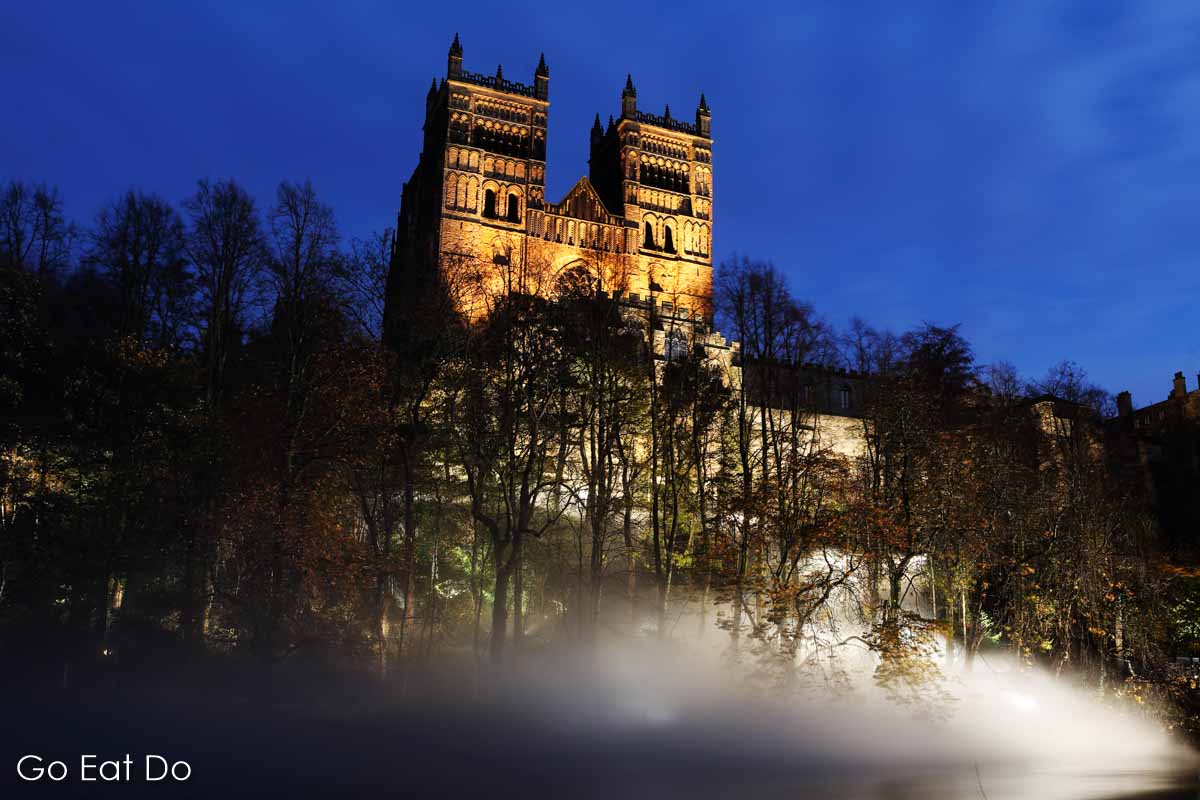
Durham is on the UK’s East Coast Main Line, meaning that arriving by train is a viable option. Travelling by rail, Durham is less than three hours from London, 12 minutes from Newcastle and one hour 40 minutes from Edinburgh. Book rail tickets to Durham via the Trainline website.
The map below shows central Durham:
Google Map showing Durham city centre.
Hotels in Durham
Durham is a busy place during Lumiere. If you’re considering staying in the city, it makes sense to book a hotel room well in advance.
If your preference is for boutique hotels, you may enjoy a night at The Townhouse. The Hotel Indigo Durham occupies the impressive Old Shire Hall, once the meeting place of Durham County Council.
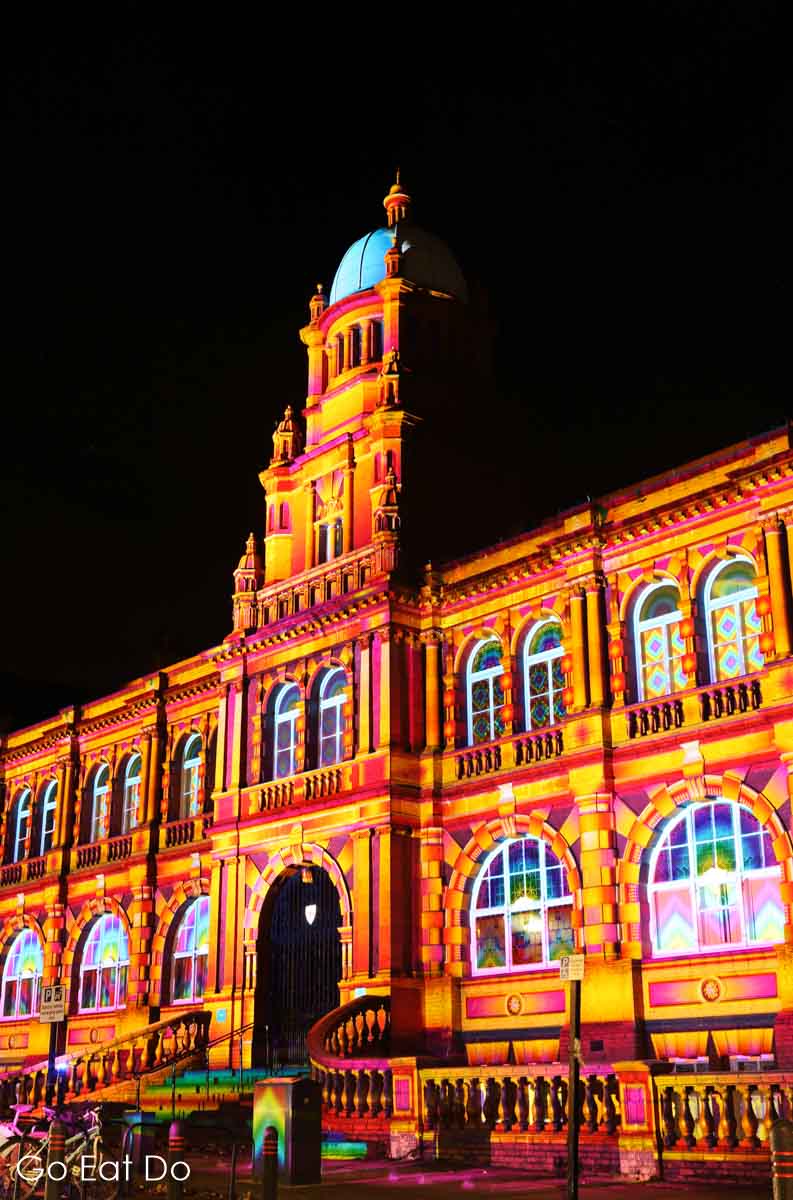
Search for hotel rooms in Durham City via Booking.com:
Booking.com
Finding accommodation in Newcastle and travelling into Durham by train is a viable alternative to staying in Durham City:
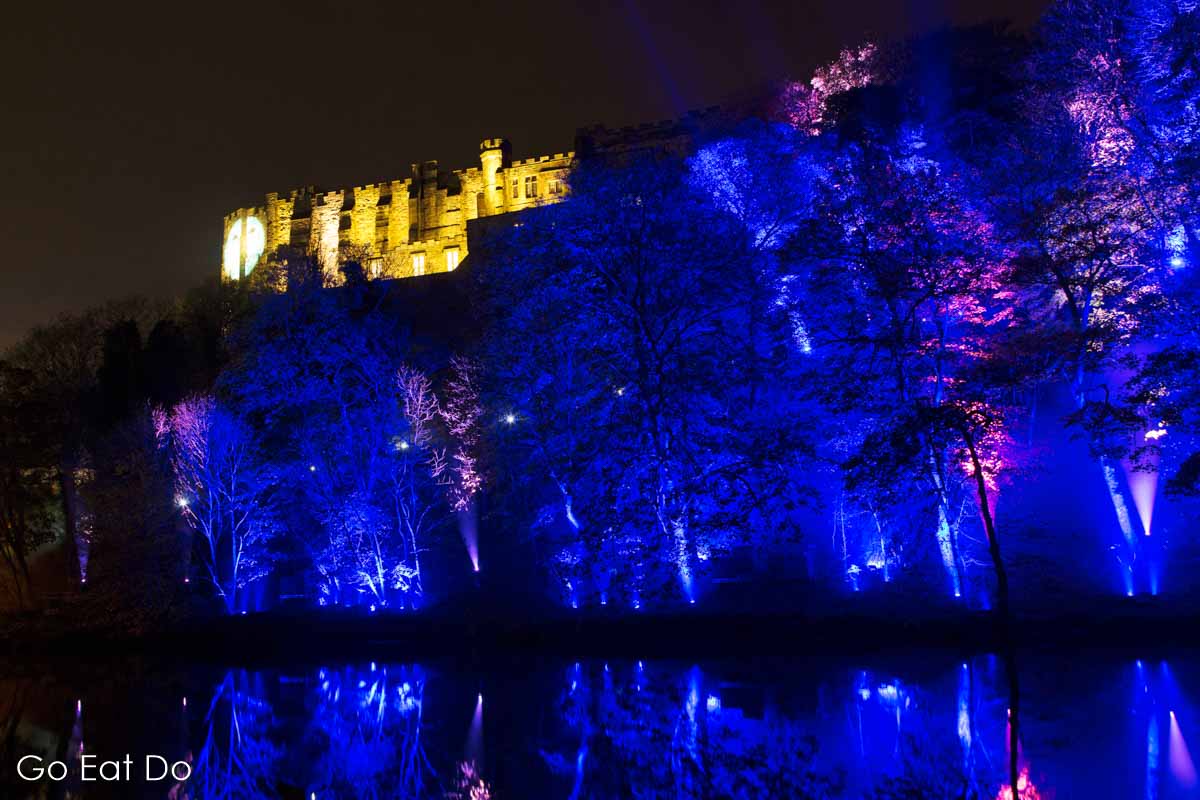
Where to eat in Durham
Looking for a traditional British bite to eat? Buy takeaway fish and chips from Bells Fish Shop, just a few steps from Durham Market Place. If the weather isn’t too cold, taking them and sitting on one of the benches in the marketplace is an opportunity for people to watch and admire the installation on the square.
Vegetarian? Try the menu at The Rabbit Hole (17 Hallgarth Street), a speakeasy-style bar and restaurant with Chinese-inspired dishes and grilled options. Jazz music and booth seating make this a cosy option for a date night in Durham or an evening out with friends.
Ramside Hall’s Fusion restaurant also serves Asian-inspired dishes. Prefer a good steak? The Rib Room, also at the Ramside Hall, serves steaks cut from aged beef reared in County Durham.
The Boat Club, near Elvet Bridge, serves all-day comfort food including burgers, wraps and sandwiches. If you’re looking for a regional delicacy try a chicken parmo.
Turtle Bay operates a Caribbean-style restaurant at The Riverwalk in Durham City.
Les Lumineoles on Durham Market Square during Lumiere Durham.
Where to drink in Durham
Corporate hospitality is an option at Lumiere Durham. The VIP hub serves food and drinks.
Looking for a drink in one of the pubs in Durham? The Head of Steam is a long-established pub with a broad choice of beers. The John Duck (91 Claypath) and Market Tavern (27 Market Place) are both centrally situated traditional British pubs.
Prefer drinking gin or wine to beer? Head to Old Tom’s Gin Bar at the Riverwalk. The Champagne Bar by Ebony is also an option, a few steps from the Gala Theatre.
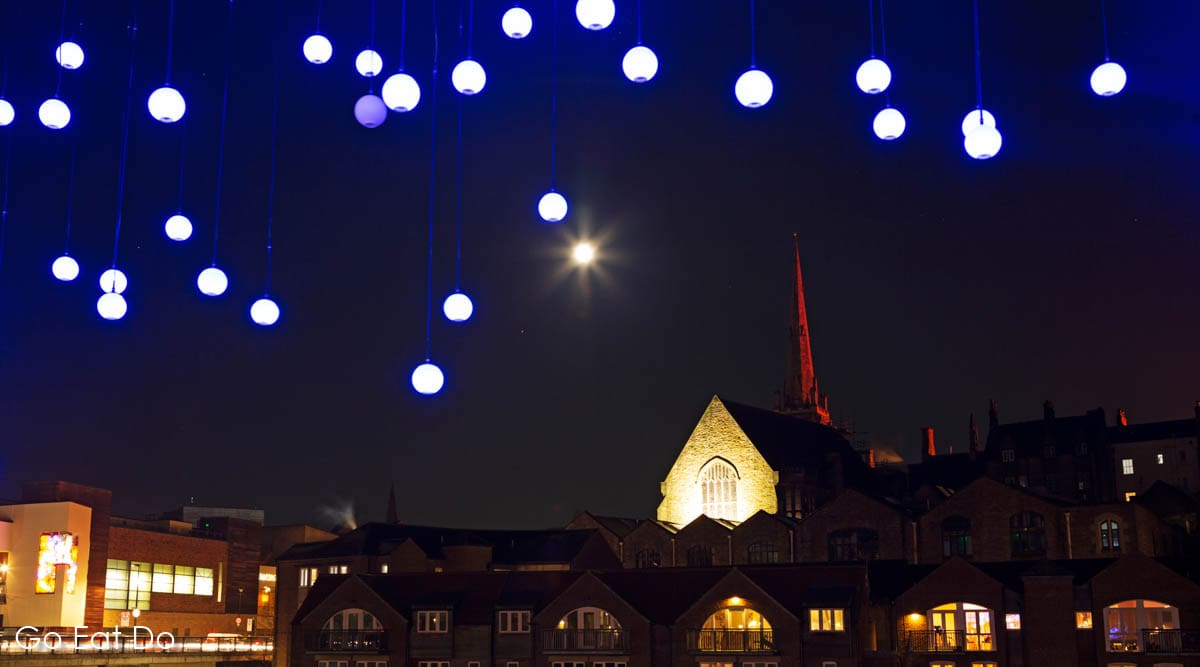
Further information
See the Lumiere Festival website for more practical information about attending the event, including details about installations, and to see photos from previous editions. The next edition of Lumiere Durham will be held in November 2021.
Visit the This is Durham website for ideas about things to do and see across County Durham.
Stuart Forster, the author of this post, is an award-winning travel writer based in the northeast of England. Please get in touch if you want to commission travel features about the region.
Photos illustrating this post are by Why Eye Photography, a photography company based in North East England.
Thank you for reading this post about visiting the Lumiere Durham festival of lights. If you’re looking for ideas about places to stay, please take a look at this post about Lumley Castle Hotel in County Durham. You may also enjoy walking at Castle Eden Dene in County Durham.
Thinking of visiting Durham between Lumiere festivals? Take a look at this post about visiting Durham for a weekend break.
If you enjoyed this post why not sign up for the free Go Eat Do newsletter? It’s a hassle-free way of getting links to posts on a monthly basis.
‘Like’ the Go Eat Do Facebook page to see more photos and content.
A version of this post was initially published on Go Eat Do on 14 July 2020.
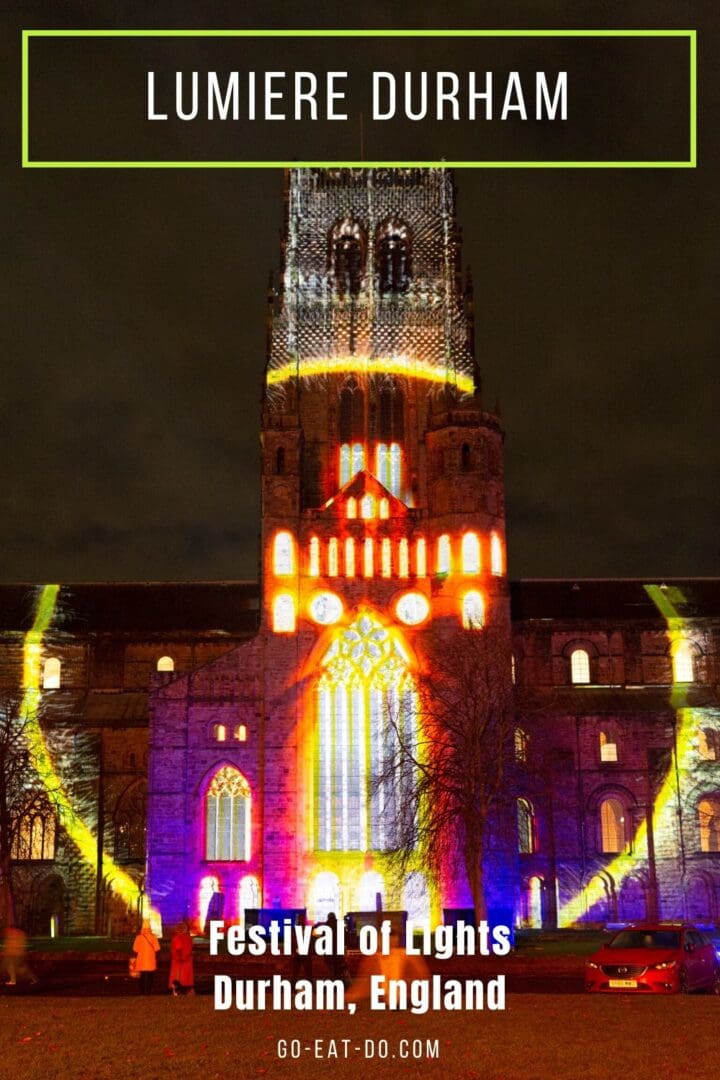

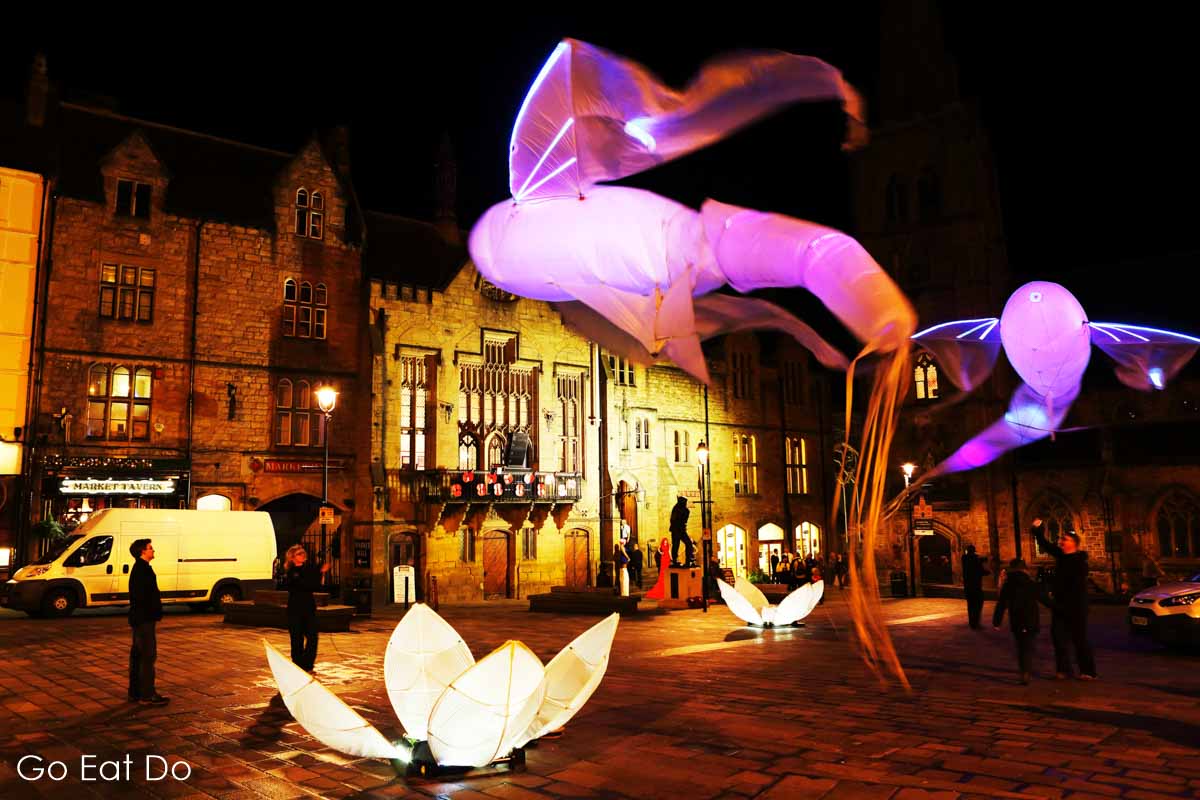



Michael Hodgson
February 17, 2022 at 22:52Love light festivals — a favorite is the Berlin Festival of Lights each fall. Have to put this one on our to-do list too! Looks amazing.
Go Eat Do
February 18, 2022 at 17:44Visiting Durham’s will be a reason to check out North East England. I love the idea of heading to the Amsterdam festival, held in wintertime.